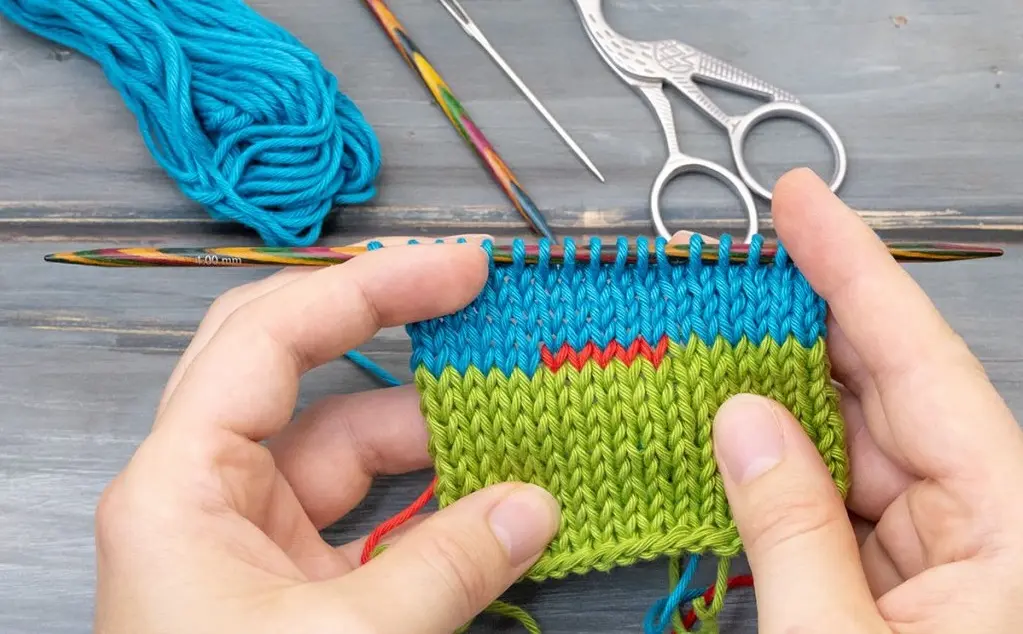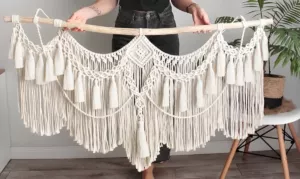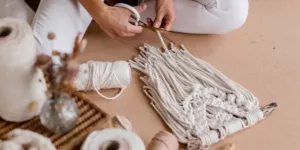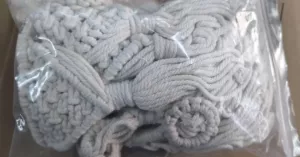How to Connect Yarn in Knitting – Yarn knitting is more than just a craft; it’s a form of art that intertwines creativity, relaxation, and practical skills. The gentle click of knitting needles and the feel of soft yarn moving through your fingers can be profoundly soothing. In this extensive guide, we will delve into the numerous benefits of yarn knitting and provide detailed techniques on how to connect yarn in knitting, including how to add new yarn to knitting projects seamlessly.
The Therapeutic Benefits of Yarn Knitting
Stress Relief and Mindfulness
Many knitters find that the repetitive motions of yarn knitting induce a state of relaxation similar to meditation. The rhythmic, repetitive action can help reduce stress and promote a sense of calm. By focusing on patterns and counting stitches, knitters often find it easier to escape from the worries of the day, entering a flow state where external pressures fade away.
Cognitive Benefits
Yarn knitting isn’t just good for your mental health; it’s also beneficial for your cognitive functions. Knitting requires concentration, memory, and pattern recognition, which keeps the brain active and engaged. Studies suggest that engaging in mentally stimulating activities like knitting can help maintain cognitive health and delay the onset of age-related cognitive decline.
Motor Skills and Dexterity
Regular knitting helps improve fine motor skills and hand-eye coordination. The act of manipulating knitting needles and yarn strengthens the muscles and joints in your hands, which can be particularly beneficial for individuals with arthritis or other joint issues.
The Creative Expression Through Yarn Knitting
A Canvas of Colors and Textures
Yarn knitting allows for endless creative possibilities. From selecting different yarn types and colors to mastering various knitting patterns, each project becomes a unique piece of art. Whether you’re knitting a vibrant scarf, a cozy sweater, or a delicate lace shawl, the scope for creativity is boundless.
Personalization and Gifting
Hand-knitted items make for personal and thoughtful gifts. A handmade piece reflects time, effort, and love, making it far more valuable than something bought off the shelf. Personalizing your projects with particular patterns, colors, and materials can result in one-of-a-kind creations that friends and family will cherish.
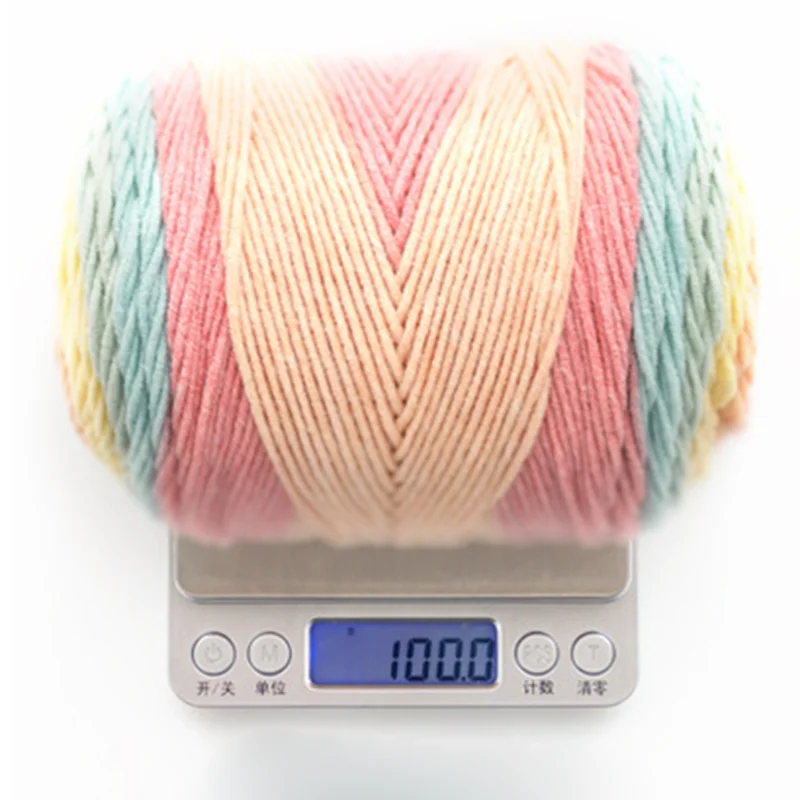
Rainbow Cotton Yarn Ball
Rainbow Cotton Yarn Ball—a perfect blend of quality and color for your next DIY project.
Social Connections and Community Building
Joining Knitting Circles and Groups
Yarn knitting can be a solitary or communal activity. Joining a knitting circle or group provides an opportunity to meet new people and share tips, patterns, and stories. These gatherings foster a sense of community and belonging, providing a social outlet that can be particularly beneficial for mental health.
Online Communities
The internet is a fantastic resource for knitters. Online communities, forums, and social media groups offer platforms where knitters can share their projects, seek advice, and provide support. These virtual knitting circles create a global network of enthusiasts who inspire and encourage one another.
Environmental and Economic Benefits of Yarn Knitting
Sustainable Crafting
By knitting your own garments and accessories, you can reduce your reliance on fast fashion, which is often harmful to the environment. Choosing sustainable, eco-friendly yarns further minimizes your ecological footprint.
Cost-Effective Crafting
While high-quality yarns and knitting tools can be an investment, knitting can be a cost-effective way to create high-quality clothing and accessories. Hand-knitted items often last longer and can be repaired easily, saving money in the long run.
Mastering How to Connect Yarn in Knitting
Why and When to Connect Yarn
In any knitting project, the need to add new yarn arises when you either finish one skein or want to introduce a new color. Knowing how to connect yarn in knitting seamlessly ensures a smooth and professional finish. There are several methods to achieve this, each suited to different types of yarn and projects.
The Basic Knot Method
A simple and straightforward way to add new yarn is the basic knot method. Here’s how to do it:
- Knot to Knot: Tie the end of the old yarn to the end of the new yarn with a secure knot.
- Continue Knitting: Incorporate the tails into your knitting where possible to hide them.
- Trim Excess: Once secure, trim any excess yarn to prevent bulk.
The Russian Join
The Russian join is an excellent technique for connecting yarn without leaving any knots or loose ends. It’s particularly useful for yarns of similar thickness:
- Thread the Yarn: Using a yarn needle, thread the tail end of the old yarn.
- Weave Through: Weave the needle back through the yarn itself, creating a loop.
- Insert New Yarn: Slip the new yarn through this loop.
- Weave In Again: Now weave the end of this new yarn back through itself.
- Pull Tight and Trim: Pull both ends tight to secure and trim any excess.
The Spit Splice (Felting Join)
This technique is ideal for wool yarns as it relies on the felting process:
- Fray the Ends: Unravel and fray the ends of both yarn pieces.
- Moisten: Wet the frayed ends slightly (traditionally done by spit, hence the name, but you can use water).
- Overlap and Rub: Overlap the frayed ends and rub them together vigorously between your palms until they felt and mesh into one continuous strand.
The Overlapping Method
Primarily used for projects where the yarn isn’t too bulky, the overlapping method is simple and effective:
- Overlap Ends: Overlap the end of the old yarn with the start of the new yarn for several stitches.
- Knit Together: Knit normally, ensuring both strands are worked into your stitches.
- Trim Excess: Once the new yarn is secure, trim any visible ends.
Adding New Yarn to Knitting: Best Practices
Choosing the Right Method
The method you choose to add new yarn to your knitting project should depend on the type of yarn and the project’s requirements. For instance, the spit splice is ideal for wool, whereas the Russian join can be used for most yarn types.
When to Add New Yarn
Avoid connecting yarn in the middle of a row. Doing so can disrupt the flow and appearance of your stitches. Instead, aim to add new yarn at the beginning or end of a row or edge where it’s less noticeable and easier to weave in the ends.
Practical Tips for Seamless Yarn Integration
Using a Yarn Needle
Invest in a good quality yarn needle for weaving in ends. A blunt-tipped needle works best for most yarn types and ensures you don’t split the yarn as you work.
Weaving in Ends
After you’ve connected the new yarn, make sure to weave in the loose ends securely. Incorporate the ends into the fabric of your knitting to prevent them from unraveling over time.
Consistency in Tension
Maintain consistent tension when connecting new yarn to avoid tight or loose stitches. Practicing on sample swatches can help you perfect your technique before applying it to larger projects.
Embracing the Craft of Yarn Knitting
Yarn knitting is a multifaceted craft that offers a wealth of benefits, from reducing stress to enhancing creativity and building community connections. By mastering the skill of seamlessly connecting yarn in knitting, you can ensure that your projects are not only beautiful but also durable. Whether you are adding new yarn to knitting a cozy sweater or a delicate scarf, the techniques outlined in this guide will help you achieve a professional result.
So, pick up your needles, choose your yarn, and dive into the therapeutic, creative, and communal world of yarn knitting. Happy knitting!

